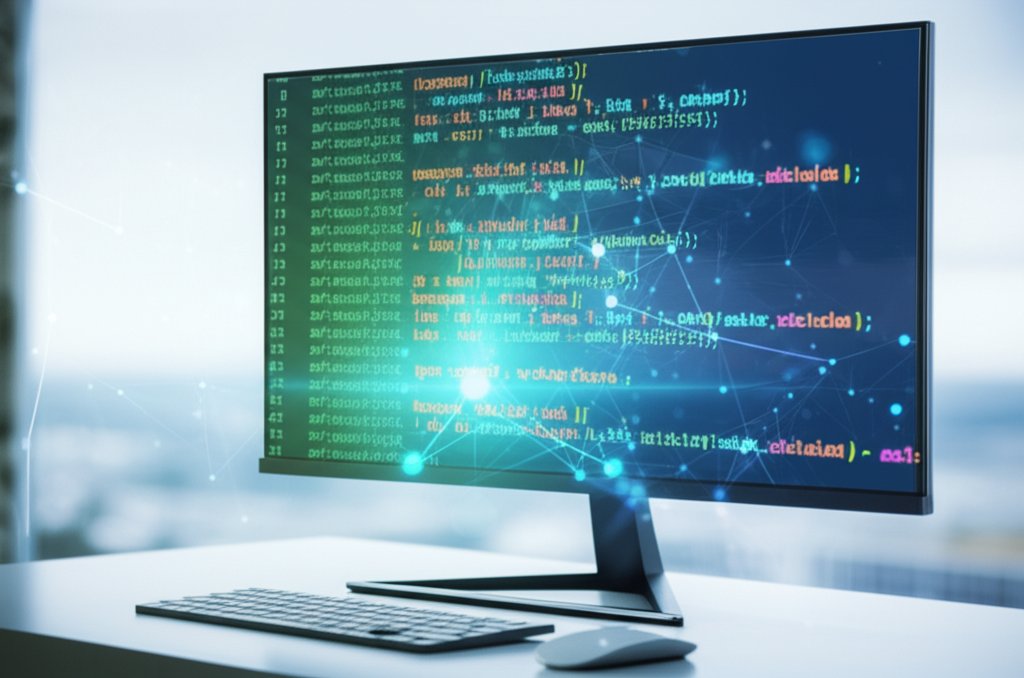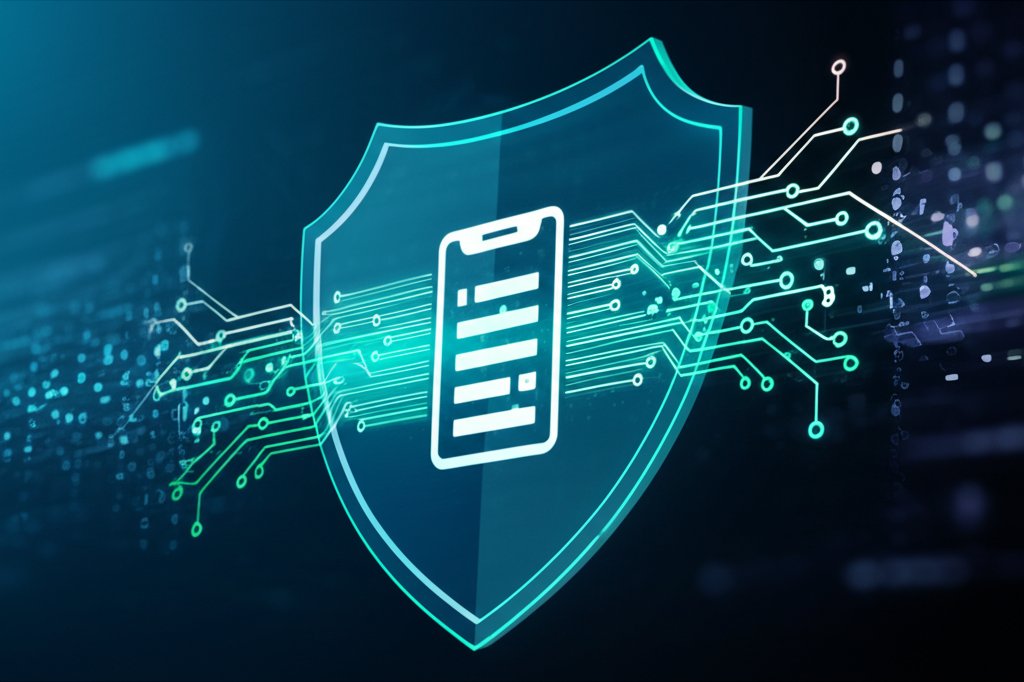The world of Artificial Intelligence is rapidly expanding, and you’re likely leveraging AI tools daily for personal tasks or business operations, often without even realizing it. From drafting emails with ChatGPT to summarizing research with Google Gemini, these tools offer immense power. But as we often emphasize in security, with great power comes great responsibility—especially regarding your data and privacy.
Think about the last time you used an AI tool. Did you, perhaps, paste a snippet of an email with client details or internal project notes for a quick rewrite? Many users unknowingly expose sensitive data this way. As a security professional, I’ve seen firsthand how quickly things can go awry when privacy isn’t prioritized. My mission is to translate complex technical threats into clear, understandable risks and provide practical, actionable solutions. You don’t need to be a cybersecurity expert to navigate the AI landscape safely. You just need a definitive, step-by-step guide to take control.
This guide is for anyone using AI—from individual users keen on protecting their personal information to small business owners safeguarding sensitive company and customer data. Today, we’re going to demystify “Privacy-Preserving AI” and, more importantly, show you exactly how to master its principles in your everyday life and small business operations. Our goal is to empower you, not overwhelm you, so you can make intelligent, secure choices with confidence.
What You’ll Learn
By the end of this practical guide, you won’t just conceptually understand privacy-preserving AI; you’ll have a concrete toolkit to actively protect your digital life. We’re talking about actionable strategies that empower you to:
- Unravel AI’s Data Interaction: Gain clarity on how AI tools collect, process, and potentially use your data.
- Pinpoint & Address AI Privacy Risks: Learn to identify common privacy vulnerabilities and understand how to mitigate them effectively.
- Master AI Privacy Settings: Confidently navigate and configure AI tool settings to ensure maximum data protection.
- Make Responsible AI Choices: Select and utilize AI tools wisely for both personal digital security and robust small business operations.
Remember, privacy isn’t just a corporate responsibility; it’s about the informed choices you make every day.
Beyond Jargon: AI and Your Data Explained
At its core, Artificial Intelligence operates by learning from vast amounts of data. Picture it as an exceptionally diligent student absorbing millions of textbooks, articles, and conversations to become proficient at answering questions or generating content. The critical privacy concern arises when your inputs to these AI tools can inadvertently become part of their “textbooks” for future learning. This is where your data’s journey truly begins to matter.
“Privacy-preserving” in this context simply means leveraging AI in methods that ensure your sensitive information is neither exposed, excessively collected, nor misused. It’s about establishing a robust digital perimeter around your valuable data whenever you interact with these intelligent tools. It’s important to distinguish this from data security, which is often confused. Data privacy is fundamentally about your control over your data; data security is about safeguarding that data from unauthorized access.
The Hidden Risks: How AI Can Accidentally Expose Your Information
It’s not always a matter of malicious intent; sometimes, privacy risks emerge from simple oversight or are inherent consequences of how these powerful AI models are fundamentally designed. Here’s what you, as a user and potentially a business owner, must be mindful of:
- Data Collection for Model Training: Many widely used public AI tools explicitly state that they utilize your inputs to refine and improve their underlying models. This means your questions, conversations, and any data you provide could potentially influence future responses or, in some cases, even be accessible by developers for model review.
- Vague Privacy Policies: Have you ever found yourself endlessly scrolling through incomprehensible terms of service? You’re not alone. Often, the language surrounding data usage is intentionally broad, affording AI providers significant leeway in how they manage your information.
- Sensitive Data in AI Responses (Data Leakage): Imagine a scenario where you ask an AI about a specific client project, and then days later, another user, perhaps unknowingly, asks a similar question and receives a snippet of information related to your client. While rare and often mitigated, this is a real possibility—a form of data leakage where your past inputs could resurface.
- Elevated Risks for Small Businesses: For small businesses, these privacy concerns escalate dramatically. Customer data, proprietary business strategies, confidential internal communications, or even unreleased product details could inadvertently find their way into public AI models. This can lead to severe compliance issues (such as GDPR or CCPA violations), significant financial penalties, and irrecoverable reputational damage. We absolutely must prevent this.
Prerequisites
Don’t worry, there are no complex technical prerequisites for this guide. All you need to bring is:
- An internet-connected device (computer, tablet, or smartphone).
- A willingness to dedicate a few minutes to understanding and adjusting settings.
- A proactive mindset towards safeguarding your digital privacy.
That’s it. Let’s transition from knowledge to actionable steps.
Your Step-by-Step Guide to Privacy-First AI Usage
This is where we translate understanding into immediate action. I’ve broken down the process into clear, digestible steps, empowering you to safely integrate AI into your routines without compromising your privacy or security.
-
Step 1: Scrutinize Privacy Policies & Terms of Service
I know, I know. Delving into privacy policies isn’t anyone’s idea of fun. But as a security professional, I can tell you that a brief, targeted scan can uncover critical details. Prioritize these sections:
- Data Collection: What categories of data are they gathering from you?
- Usage: How specifically will your inputs be utilized? Look for explicit statements about “model training,” “improving services,” or “personalization.”
- Retention: How long will your data be stored? The shorter, the better.
- Sharing: Do they share your data with third parties? If so, which ones and for what purposes?
Red flags to watch for: Ambiguous or overly broad language, vague statements about data usage, or default settings that automatically opt you into data training without clear, explicit consent.
Pro Tip: Simplified Summaries. Many reputable companies now offer simplified privacy policy summaries or FAQs. If an AI provider, especially one you’re considering for business use, lacks this transparency, consider it a significant warning sign.
-
Step 2: Actively Configure Your Privacy Settings & Opt-Out
This is arguably the most impactful step you can take. Most leading AI tools now provide granular privacy controls, but you often have to seek them out. Remember: the default settings are rarely the most private.
- ChatGPT: Navigate to “Settings” (typically in the bottom-left corner), then “Data Controls,” and locate options like “Chat history & training.” Disable this if you do not want your conversations used for model training.
- Google Gemini: Access your main Google Account settings, specifically the “Activity controls.” Here, you can pause or delete Gemini activity and prevent it from being used for personalization and future model improvements.
- Microsoft Copilot: Controls are often found within the settings of the specific Microsoft application you’re using (e.g., Edge, Windows). Look for options related to “Microsoft account activity” or “Copilot data usage” and review them carefully.
While opting out might slightly reduce personalization or the AI’s ability to recall past interactions, this is a negligible trade-off for significantly enhanced privacy and data control.
-
Step 3: Exercise Caution with Data Input into AI Tools
Here’s my foundational rule for interacting with any public AI system: Treat it as if you are broadcasting information on a public platform.
Never, under any circumstances, input sensitive, confidential, or proprietary data into general-purpose, unsecured AI systems. This unequivocally includes:
- Personally Identifiable Information (PII) such as Social Security Numbers, home addresses, phone numbers, or birthdates.
- Financial details, credit card numbers, or bank account information.
- Protected Health Information (PHI) or any sensitive medical records.
- Company secrets, unreleased product designs, internal client lists, or confidential strategy documents.
Before you type, pause and ask yourself: “Would I comfortably shout this information across a crowded public space?” If the answer is no, then it absolutely does not belong in an open AI model. This simple mental check can prevent significant data breaches and reputational damage.
-
Step 4: Select AI Tools with Trust & Transparency in Mind
The quality and privacy posture of AI tools vary widely. Especially for business use, prioritize platforms that demonstrate an explicit and verifiable commitment to data privacy.
- Enterprise Versions are Key: For small businesses, investing in paid, enterprise-grade versions of AI tools is often a non-negotiable step. These typically come with more stringent data privacy agreements, robust security controls, and contractual assurances that your business data will not be used for public model training.
- Transparency is Non-Negotiable: Look for AI providers with clear, easy-to-understand privacy policies, evidence of independent security audits (e.g., SOC 2 Type 2 reports), and features that grant you granular control over your data.
- Privacy by Design: Some tools are architected from the ground up with “privacy by design” principles. While not always immediately obvious, a deep dive into their “about us” page, technical documentation, or security whitepapers might reveal their fundamental philosophy towards data minimization and protection.
-
Step 5: Practice Data Minimization & Anonymization
These are fundamental concepts from cybersecurity that directly apply to your AI interactions and offer powerful safeguards.
- Data Minimization: The principle is simple: provide only the absolute minimum amount of data necessary for the AI tool to effectively complete its task. For instance, if you need a document summarized, can you redact or remove all names, sensitive figures, or proprietary information before feeding it to a public AI?
- Anonymization: This involves removing personal identifiers from data to ensure that individuals cannot be identified, even when the data is analyzed in large sets. If you’re using AI to analyze customer feedback, for example, strip out names, email addresses, unique IDs, and any other directly identifiable information beforehand. Utilizing synthetic data (artificially generated data that mirrors real data’s statistical properties without containing actual sensitive information) is an excellent option for testing and development.
Pro Tip for Small Businesses: Automated Data Loss Prevention (DLP). If you frequently process sensitive customer or company data, consider implementing Data Loss Prevention (DLP) solutions. These tools can automatically detect, redact, or block sensitive information from being inadvertently shared outside approved channels, including unintended AI interactions.
-
Step 6: Fortify Your Access to AI Tools
Even the most privacy-conscious AI platform can become a vulnerability if your account access is compromised. This step should already be second nature in your digital security practices, but it bears repeating:
- Strong, Unique Passwords: Absolutely non-negotiable. Utilize a reputable password manager to generate and securely store complex, unique passwords for every single AI service you use.
- Multi-Factor Authentication (MFA): Always, without exception, enable MFA. This critical layer of defense significantly increases the difficulty for unauthorized users to access your accounts, even if they somehow manage to obtain your password.
- Dedicated Accounts: For highly sensitive business use cases, consider establishing dedicated “AI-only” email addresses or accounts. This further limits data linkage across your broader digital footprint and compartmentalizes risk.
- Regularly Delete Chat Histories: Most AI platforms offer the ability to delete past chat histories. Get into the habit of routinely clearing conversations that contained any potentially sensitive or even moderately private information.
Common Issues & Practical Solutions
Even with the best intentions and diligent implementation, you might encounter a few minor roadblocks. Don’t worry; here’s how to troubleshoot common AI privacy concerns:
-
Issue: “I can’t locate the privacy settings for my specific AI tool!”
- Solution: Begin by checking the account settings directly within the AI application. If it’s a Google or Microsoft service, remember to explore your main Google Account or Microsoft Account privacy dashboards, respectively. A quick, targeted web search for “[AI tool name] privacy settings” almost always yields direct links to their official support guides or configuration pages.
-
Issue: “The AI tool generated a response that seemed to reference sensitive information I’d entered previously, even after I thought I configured privacy!”
- Solution: First, immediately delete that specific chat history. Second, meticulously double-check your privacy settings. Some settings apply to future conversations, not past ones. It’s also possible you used the tool before implementing your new privacy regimen. Always revert to Step 3: never input truly sensitive data into public AI in the first place, regardless of configured settings.
-
Issue: “It feels like too much effort to constantly check all these policies and settings!”
- Solution: Frame this effort as analogous to checking the lock on your front door. It takes mere seconds but prevents immense heartache. Start by thoroughly configuring the AI tools you use most frequently or those critical to your business operations. Once initially set up, you typically only need to re-verify them when the tool undergoes significant updates or when your usage habits change. This upfront investment saves significant time and potential risk later.
Advanced Strategies for Small Businesses
If you’re operating a small business, your responsibilities extend beyond personal data; they encompass client data, intellectual property, and regulatory compliance. Here are advanced considerations:
-
Employee Training & Robust Policy Development
Your team is your most crucial cybersecurity asset. Invest in their education! Develop clear, concise, and mandatory company policies regarding AI usage:
- Clearly define which AI tools are approved for use and, critically, which are strictly prohibited.
- Specify what categories of data can or cannot be shared with AI applications.
- Provide step-by-step guidance on how to properly configure privacy settings on approved tools.
- Educate on the inherent risks of data oversharing and its potential consequences.
Regular, digestible training sessions can dramatically reduce your attack surface. You wouldn’t permit employees to download unapproved software; similarly, don’t allow them to input sensitive company data into unsecured AI tools without proper guidance and policy.
-
Thorough Vendor Due Diligence for AI Services
When selecting any AI-powered service—whether it’s a CRM with integrated AI features, a marketing automation tool with AI content generation, or a custom AI solution—treat these AI vendors with the same scrutiny you would any other cloud provider. Ask incisive questions:
- How exactly do they handle your business’s data? Where is it stored, and who has access?
- Do they use your proprietary business data for their general model training or product improvement? (The answer should ideally be a clear “no” for business-grade services).
- What industry-recognized security certifications do they hold (e.g., ISO 27001, SOC 2 Type 2)?
- What are their explicit data breach notification procedures and service-level agreements (SLAs) for privacy incidents?
Never onboard a new AI vendor blindly. The fine print in their terms of service and privacy policy matters immensely for your business’s compliance and security posture.
-
Staying Informed & Adaptable
The AI and cybersecurity landscapes are evolving at an unprecedented pace. What’s considered best practice today might shift tomorrow. Make it a foundational business practice to:
- Subscribe to reputable cybersecurity and AI ethics news sources.
- Periodically review the privacy policies of the AI tools you use most often, especially after major software updates.
- Stay abreast of relevant regulatory expectations (e.g., GDPR, CCPA, upcoming AI regulations) that apply to your business’s use of AI, particularly concerning customer and employee data.
Next Steps: The Future of Privacy-Preserving AI
While you’re diligently implementing these practical steps, it’s also worth knowing that the brightest minds globally are actively developing even more sophisticated methods to protect your data within AI systems. We’re witnessing groundbreaking advancements in techniques such as:
- Federated Learning: This revolutionary approach allows AI models to learn from data directly on your device or server without your raw, sensitive data ever needing to leave its secure local environment.
- Differential Privacy: This technique involves injecting a carefully controlled amount of “noise” into datasets. This statistical obfuscation makes it virtually impossible to identify individual data points while still allowing for robust aggregate analysis across large datasets.
- Homomorphic Encryption: A truly incredible cryptographic breakthrough, homomorphic encryption allows AI to perform complex computations and analyses on data that remains fully encrypted throughout the entire process. The data is never decrypted, offering unparalleled privacy.
You don’t need to grasp the intricate technical nuances of these innovations right now. However, understanding that they exist—and are being actively developed—is important. These advancements aim to embed “privacy by design” into the very core of AI, making it inherently easier for everyday users and small businesses to trust and safely leverage AI tools in the future. Ultimately, this means less heavy lifting for you down the road!
Conclusion: Empowering Your Privacy in an AI-Powered World
Navigating the exciting, yet sometimes challenging, world of Artificial Intelligence doesn’t have to be a venture fraught with uncertainty. By adopting a few proactive steps, gaining a fundamental understanding of data privacy principles, and making smart, informed choices about your digital interactions, you can confidently harness the immense benefits of AI tools while rigorously safeguarding your personal and business information.
Always remember: your privacy is fundamentally in your hands. You possess the agency to make informed decisions and implement robust safeguards. This isn’t just about skillfully avoiding risks; it’s about empowering yourself to embrace AI’s transformative potential without compromising your digital security or peace of mind.
Action Challenge: Implement one new privacy setting today! What specific privacy controls did you discover in your most used AI tools? Share your findings and stay tuned for more practical tutorials designed to put you firmly in control of your digital security.









